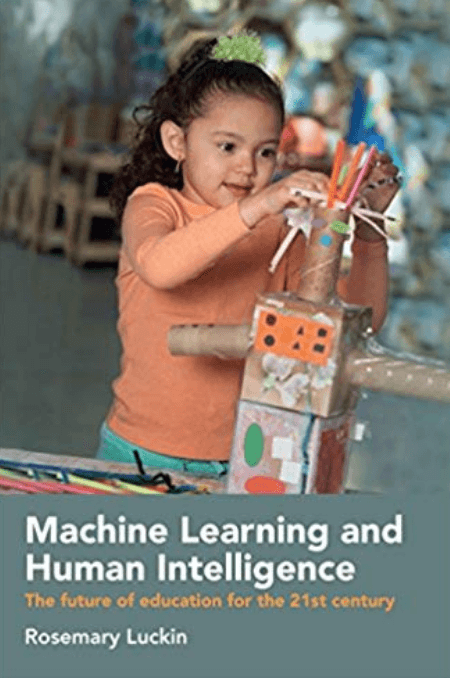Machine learning and human intelligence
Review by Terry Freedman, 2018
 Machine learning and human intelligence
Machine learning and human intelligence
by Rosemary Luckin.
Date: June 2018
Reviewed: 2018
Luckin’s thesis may be summed up as: before we can understand artificial intelligence, we need to understand human intelligence. At the moment, we seem to be in thrall to the wonders of AI, but all AI does is learn and crunch through data very quickly. It is, in short, pretty one-dimensional.
Although the book is chatty to an extent, and draws on personal (childhood) experiences), it is not an easy read. This is an advantage: to get the most out of the book you need to keep stopping and reflecting.
Luckin discusses different forms of knowing, and gender differences in this. I mention this because one thing leaps out from this book: nothing is as simple or as straightforward as you might think.
Luckin reminds us more than once that information is not synonymous with knowledge, and takes issue with the British Library, which at one time attempted to get people through its doors by promising them they would find knowledge within.
We are also reminded that AI has no metacognition. It doesn’t know how it arrives at its answers, and unlike us doesn’t know how it feels about what it knows. My view is that this can be dangerous when it comes to making decisions about a child. If the AI recommends something without knowing why, and because of automation bias (see above) we accept it on trust, how can that be a justifiable basis for decisions affecting the child’s future?
As far as the author is concerned, if a technology can appear human to us, that is more a reflection of our understanding of what it means to be human. She also believes that the debate between knowledge and skills is a red herring, and I agree. I’ve always wondered how you can teach a skill without also teaching (or assuming) some knowledge.
Luckin has developed a seven element model of “interwoven intelligence”. She says that we need to educate people for an AI-enhanced world, and we need to devise AI systems that can help us grow our intelligence. We should be using AI to enhance what we can do, so that both kinds of intelligence — human and artificial — are used to their best advantage.
While the book is not light reading, it is very rewarding. It takes the unusual approach (but surely the right one) of using us as the starting point rather than the AI we’ve created. Also, by analysing the different kinds of intelligence she makes the idea of changing our education system to acknowledge and accommodate AI seem almost doable.
My only beef with the book is that it doesn’t come with a copy of the program the author wrote to simulate politicians’ responses to difficult questions!
To purchase the book on Amazon, please go here: https://amzn.to/2PUFikj (Amazon affiliate link)
This review first appeared in a special AI issue of Digital Education. To read the entire issue, please go here: https://www.ictineducation.org/digital-education-archive/.
